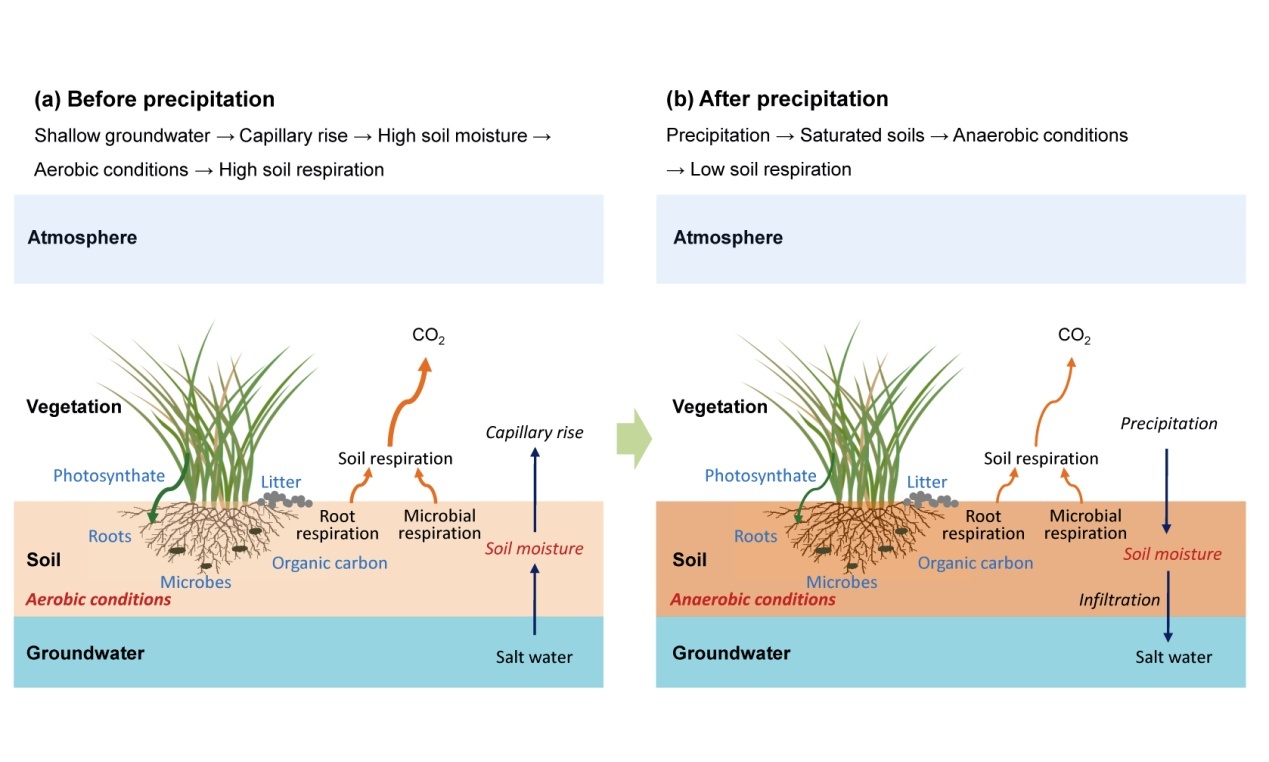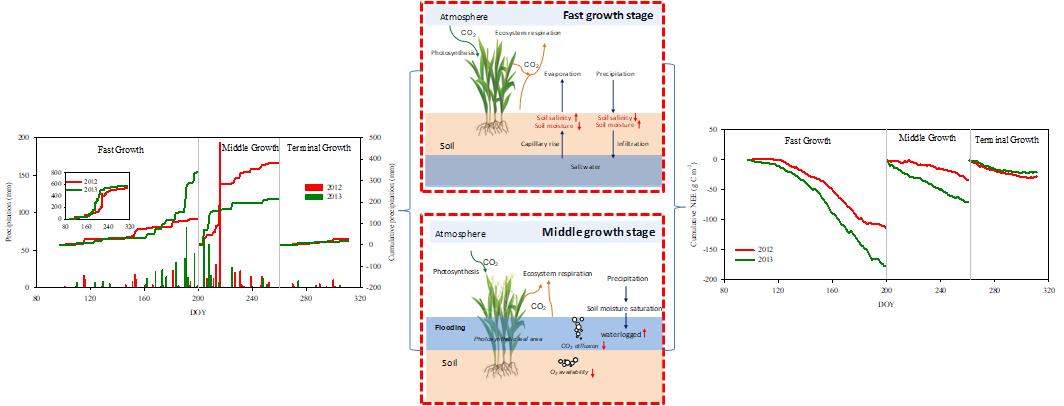
Coastal wetlands are considered as significant sink for global C and contributors to global "blue carbon" resources, with the ability to trap and bury significant amounts of allochthonous C.
Drought and episodic flooding caused by precipitation redistribution could impact soil and air moisture conditions and profoundly alter the structure, functioning and processes of an ecosystem, including the "blue carbon" balance under climate change.
Groundwater is transported upward to the root zone through capillary rise, thus soil moisture in coastal wetlands is relatively high even when there is no precipitation. As precipitation occurred, soil in coastal wetlands might become quickly saturated due to shallow water tables, which leaded to the development of anoxic conditions.
Hence, accurately quantifying ecosystem CO2 exchange response to precipitation events is essential to understand ecosystem C balance dynamics of the wetland.
Based on continuous automated soil respiration data collected in a coastal wetland in the Yellow River Delta over 4 years (2012-2015), a team led by HAN Guangxuan from Yantai Institute of Coastal Zone Research (YIC) of the Chinese Academy of Sciences revealed the influence mechanism of rain pulse on soil respiration in a coastal wetland. Their findings were published in Agricultural and Forest Meteorology.
The result showed that even small rainfall event could decrease soil respiration by increasing soil moisture. After each precipitation event, soil respiration was significantly negatively correlated with soil moisture under different initial soil water contents. There was a significant positive correlation between changes in soil respiration and changes in soil moisture following precipitation events. Therefore, the increase in soil moisture due to precipitation can protect soil C by decreasing soil respiration.
The warming and drying of the climate in the Yellow River Delta would accelerate soil organic carbon decomposition, and eventually weaken carbon sink function of the coastal wetland. Precipitation events reduce soil respiration in a coastal wetland based on four-year continuous field measurements.
In addition, using the eddy covariance technique, researchers also investigated the response mechanism of ecosystem CO2 exchange (NEE) on precipitation distribution over a coastal wetland. The results showed that the higher precipitation promoted net ecosystem CO2 absorption due to the increased SWC and reduced salt stress during the fast growth stage. While the higher precipitation suppressed net ecosystem CO2 uptake due to the increased waterlogged stress during the middle growth stage.
These results illustrated that the precipitation distribution could modify the magnitude of NEE as well as its response to light and temperature in coastal wetlands. Therefore, understanding the responses of NEE to the precipitation redistribution is essential not only for predictive modeling of potential short- and long-term changes of carbon storage but also for predicting the possible impacts of climate change.
This research was funded by the National Nature Science Foundation of China and the Science and Technology Service Network Initiative.

Fig.1 The effect of precipitation on soil respiration in a coastal wetland. (Image by YIC)

Fig.2 The effect of precipitation distribution on NEE in a coastal wetland. (Image by YIC)

86-10-68597521 (day)
86-10-68597289 (night)

86-10-68511095 (day)
86-10-68512458 (night)

cas_en@cas.cn

52 Sanlihe Rd., Xicheng District,
Beijing, China (100864)

